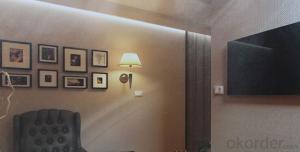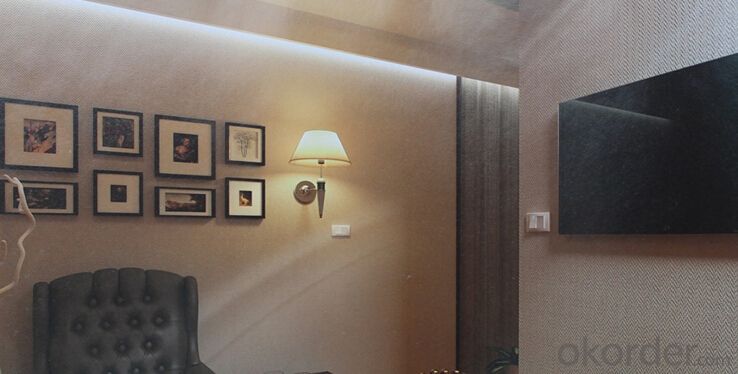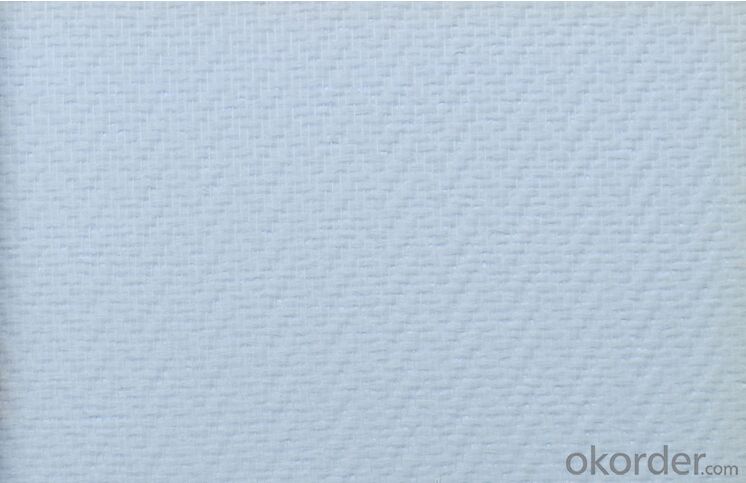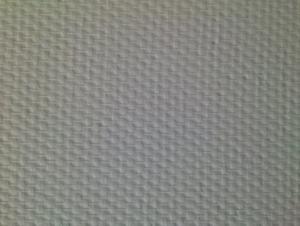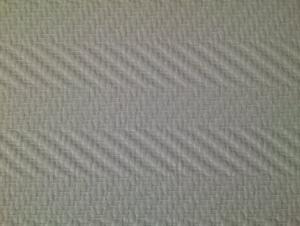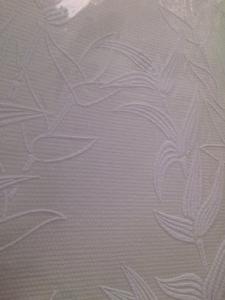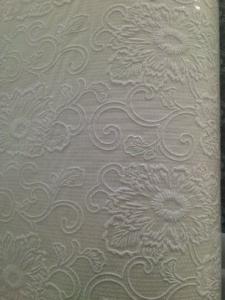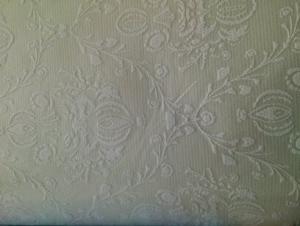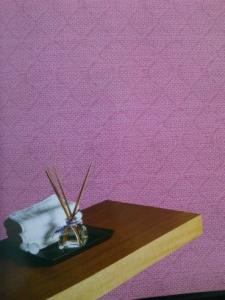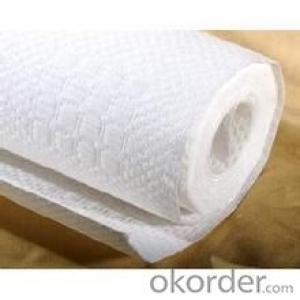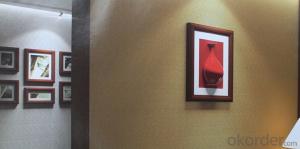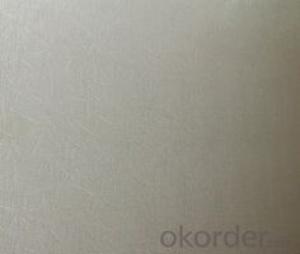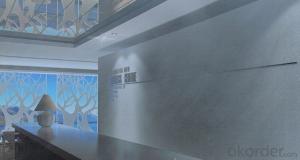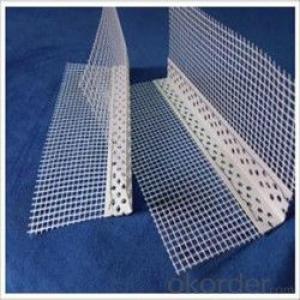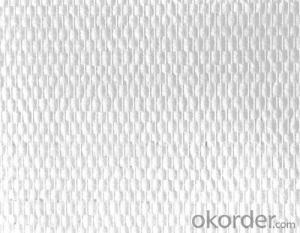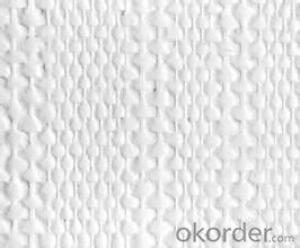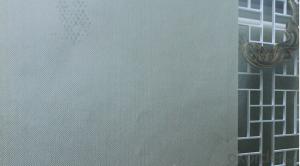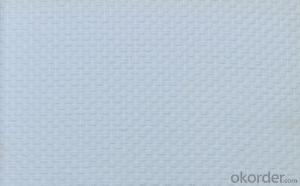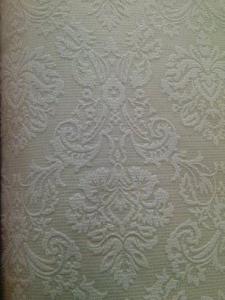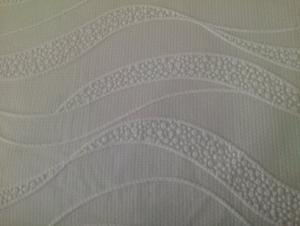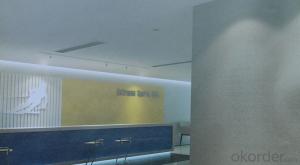Customizable Fiberglass Wallcovering Cloth
- Loading Port:
- Shanghai
- Payment Terms:
- TT OR LC
- Min Order Qty:
- 100 m²
- Supply Capability:
- 100000 m²/month
OKorder Service Pledge
OKorder Financial Service
You Might Also Like
Fiberglass Wallcovering Cloth Can Be Customized
Specification of Wallcovering Cloth
.Environment-friendly
.Flame retardent
.Air permeability
.Waterproof
.Anti-corrosion
.Imcomparable strength
.Abundant patterns and colors
.Long life time
Packing Details
.Width:1m
.Length:25/50m
.Each roll of wallcovering cloth is wrapped in a shrinking polythene film,then put in carton
Introduction of wallcovering Cloth
Fiberglass wallcovering cloth,that combines the versatility of paint,from latex to epoxy,with the
strength and benefits of woven fiberglass textile yarns to meet the most demanding wall finish
requirments.Fiberglass textile yarns,as a kind of natural materials,are woven into various textures
and patterns and then treated with a natural starch binder for dimensional stability during the hanging
process.
Compared with traditional wall papers,fiberglass wall covering cloth has the following advantages:
Environment friendly,Flame Retardant,Air Permeability,Shock Resistance,Waterproofing,Anti-corrosion,Abundant Colors&Patterns.
Product Show
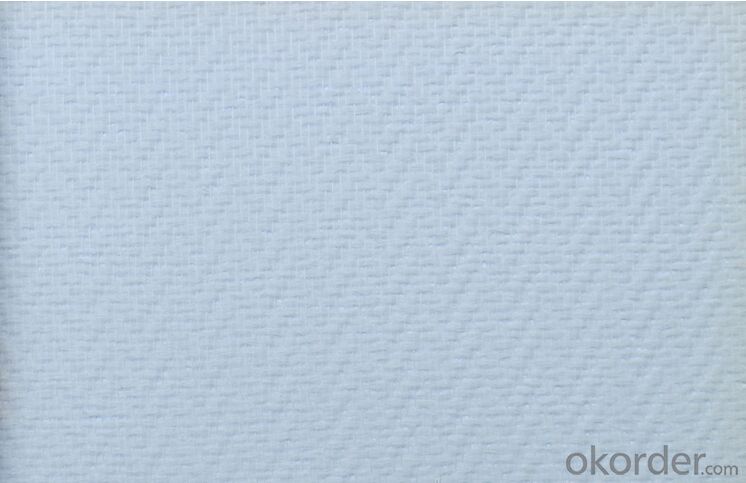
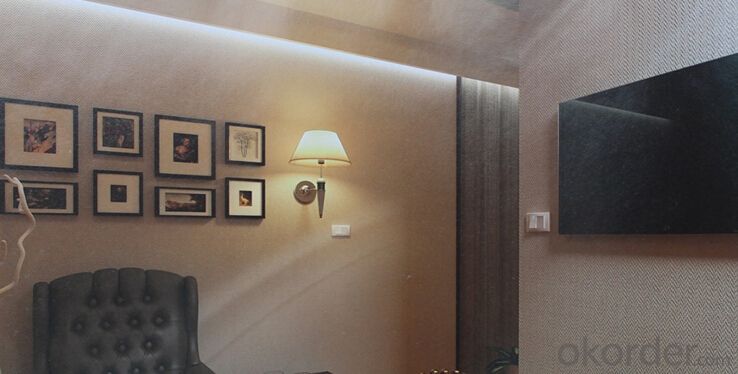
Application of Wallcovering Cloth
As a high-tech indoor decorating material,fiberglass wallcovering cloth is widely used in resident homes,
offices and shops and even cinemas,theatres,hotels and hospital faclilties,air ports,office buildings,shopping centers and schools.
Test Report
Our product has passed test by SGS as follows:
EN 12956:for determination of dimensions,straightness,spongeability and washability.
EN 12149:for determination of magration of heavy metals and certain other elements,of
vinyl monomer and of formaldehyde release.
EN 20105-B02:light solidity.
Our products had passed test of Fire Retardancy M1 Class by LINE
- Q: Can fiberglass wallcovering cloth be used in residential settings?
- Yes, fiberglass wallcovering cloth can be used in residential settings. It is a durable and versatile material that can provide added strength and durability to walls. It is commonly used in high-traffic areas and areas prone to moisture or damage, making it suitable for residential applications such as kitchens, bathrooms, and hallways. Additionally, fiberglass wallcovering cloth can also provide insulation and soundproofing benefits.
- Q: Is fiberglass wallcovering cloth suitable for use in concert halls or auditoriums?
- Concert halls and auditoriums can benefit from the use of fiberglass wallcovering cloth. This type of cloth offers numerous advantages that make it an ideal choice for these venues. To begin with, fiberglass wallcovering cloth possesses exceptional acoustical properties. It effectively absorbs sound and reduces echoes, which is crucial in spaces where top-notch sound quality is essential. By minimizing sound reflections, fiberglass wallcovering cloth enhances the overall acoustic experience for performers and audience members alike. Moreover, fiberglass wallcovering cloth boasts high durability and resistance to wear and tear. Given that concert halls and auditoriums often experience heavy foot traffic, the walls can be susceptible to damage from scratches, scuffs, or impacts. However, fiberglass wallcovering cloth acts as a protective layer, safeguarding the walls from such harm. This ensures that the spaces maintain their aesthetic appeal and longevity. Additionally, fiberglass wallcovering cloth is fire-resistant, which is particularly important in public venues like concert halls and auditoriums. Its fire-resistant properties not only ensure compliance with safety regulations but also provide peace of mind to both venue operators and attendees. Furthermore, fiberglass wallcovering cloth is easy to clean and maintain. It is resistant to stains, moisture, and mildew, making it suitable for areas that experience high foot traffic and are prone to spills or fluctuations in humidity. Regular cleaning and maintenance can help preserve the walls' appearance and hygiene, contributing to a pleasant and welcoming environment for all. In conclusion, fiberglass wallcovering cloth is a suitable choice for concert halls and auditoriums due to its excellent acoustical properties, durability, fire resistance, and ease of maintenance. It offers a practical and aesthetically pleasing solution that enhances the overall experience for both performers and audiences in these spaces.
- Q: Does fiberglass wallcovering cloth have any specific installation requirements for temperature conditions?
- Yes, fiberglass wallcovering cloth does have specific installation requirements for temperature conditions. It is recommended to install fiberglass wallcovering cloth in temperatures ranging from 50°F (10°C) to 90°F (32°C) for optimal results. Installing the cloth in temperatures below 50°F can result in poor adhesion of the adhesive, leading to potential lifting or peeling of the cloth. On the other hand, installing it in temperatures above 90°F can cause the adhesive to dry too quickly, making it difficult to properly position the cloth. Therefore, it is important to ensure that the temperature conditions are within the recommended range during installation to achieve a successful and long-lasting application of fiberglass wallcovering cloth.
- Q: Does fiberglass wallcovering cloth have any odor or off-gassing?
- Fiberglass wallcovering cloth typically does not have any noticeable odor or off-gassing. This is because fiberglass itself is an inert material that does not release any harmful chemicals or volatile organic compounds (VOCs) into the air. However, it is important to note that some adhesives or paints used in the installation process may have their own odor or off-gassing properties. Therefore, it is always recommended to use low-VOC adhesives and paints when applying fiberglass wallcovering cloth to ensure a minimal impact on indoor air quality.
- Q: Can fiberglass wallcovering cloth be painted over?
- Certainly, you can paint over fiberglass wallcovering cloth; however, there are several crucial steps you must follow to achieve optimal results. Firstly, make sure the wallcovering cloth is thoroughly clean and devoid of any dirt or dust particles. Subsequently, apply a primer specifically formulated for fiberglass surfaces to ensure proper adhesion and a flawless finish. Once the primer has dried, you can apply your preferred paint color using either a roller or a brush. For the best outcome, it is advisable to utilize a high-quality latex or acrylic paint. Bear in mind that multiple layers may be necessary to attain complete coverage and the desired appearance. All in all, by adequately preparing and employing the appropriate materials, you can successfully paint over fiberglass wallcovering cloth to achieve your desired aesthetic.
- Q: How does fiberglass wallcovering cloth compare to vinyl wallcovering?
- Fiberglass wallcovering cloth and vinyl wallcovering are both popular choices for wall coverings, but they have some key differences in terms of durability, appearance, and installation. In terms of durability, fiberglass wallcovering cloth generally outperforms vinyl wallcovering. Fiberglass is known for its strength and resistance to tearing, making it a great option for high-traffic areas or locations prone to impacts. Vinyl, on the other hand, can be more prone to scratches and tears, especially in areas where there is heavy use or potential for sharp objects to come into contact with the walls. Appearance is another factor to consider. Fiberglass wallcovering cloth typically has a more textured and natural look compared to vinyl. It can mimic the appearance of fabrics, such as linen or burlap, and can add depth and visual interest to a room. Vinyl, on the other hand, usually has a smoother and more uniform appearance, often with a glossy finish. It can provide a sleek and modern look, but it may not have the same level of visual texture as fiberglass. Installation also differs between the two options. Fiberglass wallcovering cloth is typically installed by applying adhesive directly to the wall and then pressing the cloth onto it. This method can be a bit more time-consuming and requires precision to ensure a smooth and even application. Vinyl wallcovering, on the other hand, is often pre-pasted or peel-and-stick, making it easier and quicker to install. Vinyl can be a good option for DIY projects or for those who prefer a simpler installation process. In summary, fiberglass wallcovering cloth offers superior durability and a textured, natural appearance, but installation can be more involved. Vinyl wallcovering, on the other hand, is easier to install and provides a smooth, uniform look, but may not be as durable in high-traffic areas. Ultimately, the choice between the two will depend on your specific needs, preferences, and the desired aesthetic for your space.
- Q: Is fiberglass wallcovering cloth resistant to scratches and dents?
- Without a doubt, fiberglass wallcovering cloth boasts an impressive resistance to scratches and dents. Its durability and strength are unmatched, as it is specifically engineered to endure impact and fend off any potential harm. The meticulous composition and construction of this material render it exceptionally impervious to both scratching and denting, making it an ideal option for heavily frequented areas or places prone to inadvertent damage. Moreover, this remarkable fabric often undergoes a protective coating process, fortifying its defenses against scratches and dents, guaranteeing its enduring performance and preserving its aesthetic allure throughout the years.
- Q: Can fiberglass wallcovering cloth be used in conjunction with other wallcoverings?
- Yes, fiberglass wallcovering cloth can be used in conjunction with other wallcoverings. It can act as a base layer to provide added strength, durability, and resistance to cracking or peeling. By applying other wallcoverings on top, such as paint or wallpaper, it allows for customization and aesthetic enhancement while still benefiting from the protective properties of the fiberglass cloth.
- Q: Can fiberglass wallcovering cloth be used in high-traffic areas?
- Yes, fiberglass wallcovering cloth can be used in high-traffic areas. Fiberglass wallcovering cloth is known for its durability and strength, making it suitable for areas that experience a lot of foot traffic. It is resistant to wear and tear, making it less likely to get damaged or show signs of wear even in high-traffic areas. Additionally, fiberglass wallcovering cloth is easy to clean and maintain, which is ideal for areas that may require frequent cleaning. Overall, fiberglass wallcovering cloth is a practical and durable choice for high-traffic areas.
- Q: Can fiberglass wallcovering cloth be used in conjunction with textured wall finishes?
- Fiberglass wallcovering cloth is a versatile material that can be used in combination with textured wall finishes. It can be applied to various surfaces, including textured walls, to create a smooth and even surface. By hiding imperfections, it provides a clean canvas for decorative finishes or painting. Regardless of whether the textured wall finish is rough or has a pattern, the fiberglass cloth can be used to achieve a seamless and smooth base. To ensure proper adhesion and durability, it is crucial to prepare the textured wall surface before applying the fiberglass cloth. In conclusion, incorporating fiberglass wallcovering cloth with textured wall finishes can improve the appearance of the walls and offer a durable and long-lasting solution.
Send your message to us
Customizable Fiberglass Wallcovering Cloth
- Loading Port:
- Shanghai
- Payment Terms:
- TT OR LC
- Min Order Qty:
- 100 m²
- Supply Capability:
- 100000 m²/month
OKorder Service Pledge
OKorder Financial Service
Similar products
Hot products
Hot Searches
